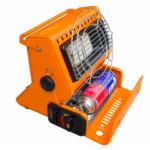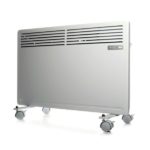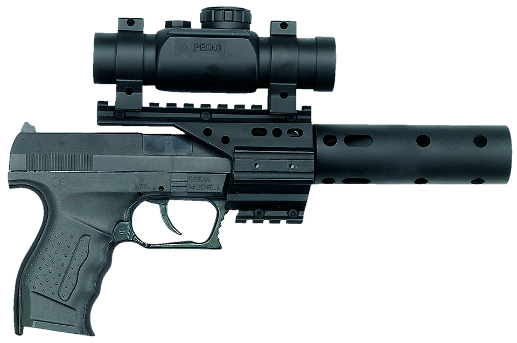How to install a convector on a windowsill by professionals
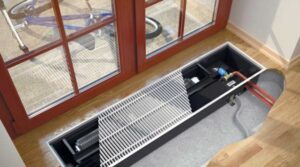
This article is for those who want to understand the topic of convectors. In it you will learn what a convector is and their operating principle, what types of convectors exist, the advantages of convectors built into a window sill. Also below are step-by-step instructions on how to install a convector in a windowsill.
The content of the article
Convectors - what are they? How do convectors differ from radiators? Principle of operation
Convectors are heating devices used indoors as the main or additional heating system. They look like thin and smooth batteries. They differ from radiators in that radiators heat the air with their surface, while convectors pass air through them, which continuously moves. They also do not have a container with oil, which is why they differ in shape.
Operating principle of the convector
Their operating principle is as follows:
The surface of the convector is heated using a heating element or heat exchanger. The air in the room constantly circulates due to different temperatures. Cold air from below rises through the convector, where it heats up, after which it goes up, cools and falls cold. The cycle repeats.
The advantages of convectors: they quickly heat the room, do not interfere, and sometimes complement the interior, they are compact, and can be installed on/in walls, floors, and window sills.
Types of convectors by installation method
Convectors can be installed in different ways, for example, on the wall like a regular radiator. But why? There is a radiator for this. The advantage of the convector is that it can be turned over, it is thin and small. Therefore, they are used indoors to comply with the design - they are built into surfaces. The three most common methods are:
- into the wall
- To the floor
- On the windowsill
Built into the wall.
The standard method is to make a recess in the wall and install a convector in it. Does not spoil the interior design, quickly heats the room. In the latter, it is helped by natural convection (air movement due to temperature differences). As a rule, they are large in size and have forced convection; they have a fan that forces air inside; There is also one with natural convection. Design – main part, system/control unit, heating element or warm water.
Built into the floor.
Convectors built into the floor resemble a warm floor system. Most often they are built in so as not to spoil the design and because a simple wall-mounted radiator does not fit into the room. Like the previous ones, they are mostly represented by large models with forced convection (fan for air intake). Structurally, they are no different - the housing, the control system, the heating medium (element/water). The principle of operation has not changed: cold air settles on the floor, is driven inside the convector by a fan, where it heats up and exits through the air vent.
Built into the window sill.
Convectors of this type of installation are gaining popularity. Their main advantage is the fight against cold/draft. The air near the window warms up best, so it won’t blow from there. Such convectors are also installed in rooms with high humidity so that there is no condensation on the windows. These convectors differ from those built into the floor in that they have a moisture removal system; sometimes it is made automatic. Their design is no different.
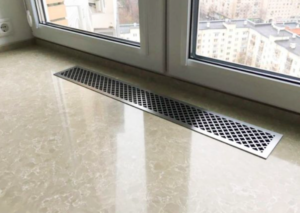
We answer basic questions
Can convectors be used as the main heating system?
Built into the wall, floor - yes. Built into a window sill - no. The latter fight condensation on windows well and maintain the room temperature. But because of the way they are installed, there will always be cold air between the center of the room and the window, while the warmest air will be near the window.
Convectors built into the floor are recommended to be used as an additional source of heat.
Large/small room area, which convector to choose?
In rooms with a large area it is better to install wall and floor convectors. A window sill is also suitable for small rooms. This is explained by the same cold air between the center and the window. In large rooms it will be felt more strongly, plus the center of the room will be colder. In small rooms the difference is negligible.
Advantages of convectors built into the window sill
- Compact (space is used efficiently, they stand unnoticed)
- High efficiency
- Consume little
- Convenient to use and care
- Use natural convection (forced models are not popular)
- Maintains humidity levels
- Durable
- Fighting condensation on windows
How to install a convector in a window sill, step-by-step instructions
Finished apartments are handed over to buyers already with window sills, which will interfere with the installation of the convector in the window sill, so first remove the window sill. Further:
- Draw the base of the wall - where the convector will be located, its control unit, mounting holes, where the pipes, wires and cables will go.
- Drill holes for the dowels with a drill or hammer drill (when drilling into concrete, do not forget to add water to the drill and clean dust from the hole).
- Insert dowels. Bring the pipes to the windowsill.
- Connect the pipeline elements to the device body.
- Install the convector in its place on the windowsill. Secure the device with the self-tapping screws from the kit.
- Stretch the wires, cable. Connect them with the corresponding ones on the device.
- Install the control unit.
- Connect the pipeline pipes to the device.
- Check the operation and tightness of the convector and its connections.
- Mount the window sill cover and secure it.
- Seal the joints around the lid with sealant.

